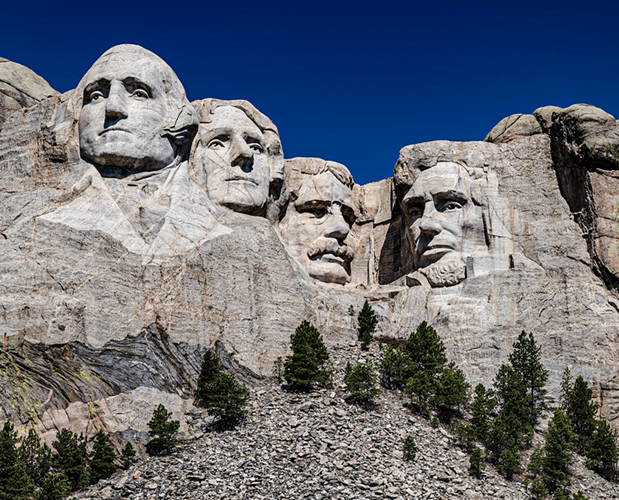list of 10 images to put in an order: #3 'Mount Rushmore'
Start with the page of which you, or your group think it reflects the idea 'Awareness' in the best way, and then down to the page with the least meaning

4 American presidents on Sacred Indian Ground
Every year, the many visitors to Mount Rushmore National Memorial in the Black Hills of South Dakota draw inspiration from the colossal portraits of four outstanding presidents of the United States: George Washington, Thomas Jefferson, Abraham Lincoln, and Theodore Roosevelt. Gutzon Borglum carved his gigantic Shrine of Democracy Sculpture into ancient granite high on the southeast face of Mount Rushmore “in commemoration of the foundation, preservation, and continental expansion of the United States.” The faces of George Washington, Thomas Jefferson, Abraham Lincoln, and Theodore Roosevelt are about 60 feet high, and the grouping extends approximately 185 feet along the crest of Mount Rushmore.
www.nps.gov
Built on sacred Native American land and sculpted by a man with ties to the Ku Klux Klan, Mount Rushmore National Memorial was fraught with controversy even before it was completed 79 years ago on October 31, 1941.
Mount Rushmore pays patriotic tribute to four United States presidents—George Washington, Thomas Jefferson, Theodore Roosevelt, and Abraham Lincoln—with 60-foot-tall faces carved into a mountainside in the Black Hills of South Dakota.
www.nationalgeographic.com
To understand how Mount Rushmore has become a cultural symbol and flash point, here’s a look at how the memorial came to be.
Stolen land
Before it became known as Mount Rushmore, the Lakota called this granite formation Tunkasila Sakpe Paha, or Six Grandfathers Mountain. It was a place for prayer and devotion for the Native people of the Great Plains, explains Donovin Sprague, head of the history department at Sheridan College in Wyoming and a member of the Cheyenne River Sioux Tribe. The mountain’s location in the Black Hills was also significant.
“It’s the center of the universe of our people,” Sprague says. For Lakota, Cheyenne, and Arapaho communities, the region was not only spiritually important, it was also where tribes gathered food and plants they used in building and medicine.
In the late 1800s, Euro-American settlers began pushing into the Black Hills, igniting a war with the indigenous population. The U.S. government signed the Treaty of Fort Laramie in 1868, giving the Lakota exclusive use of the Black Hills. Within a decade, however, gold was discovered in the region and, in 1877, the U.S. broke the treaty and took over the land."
